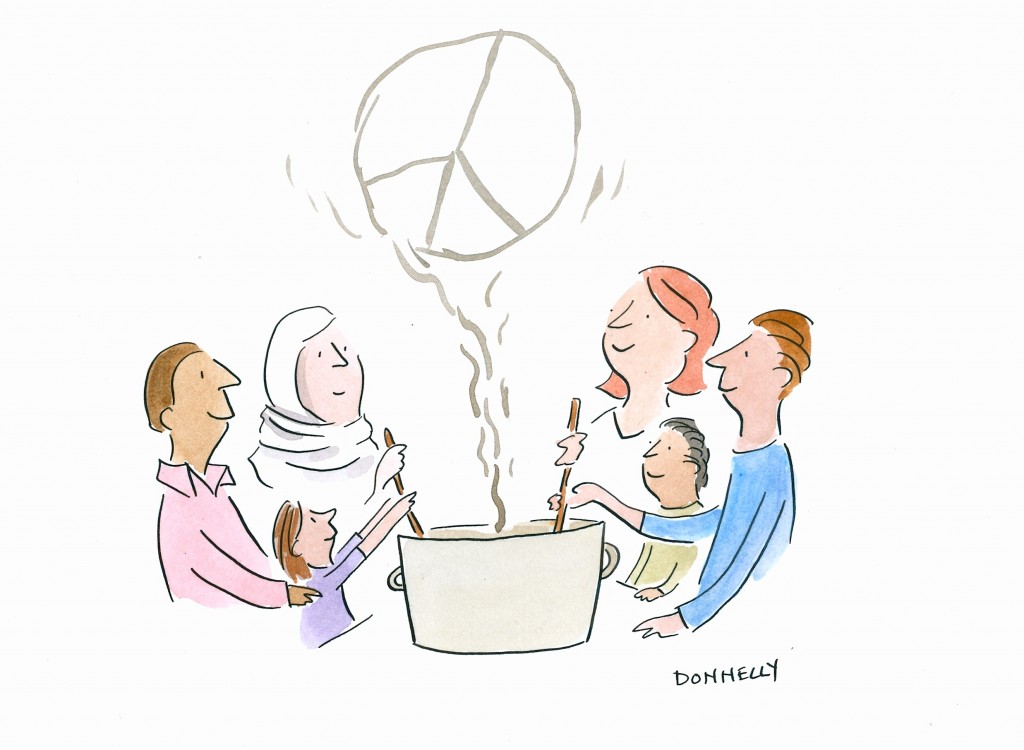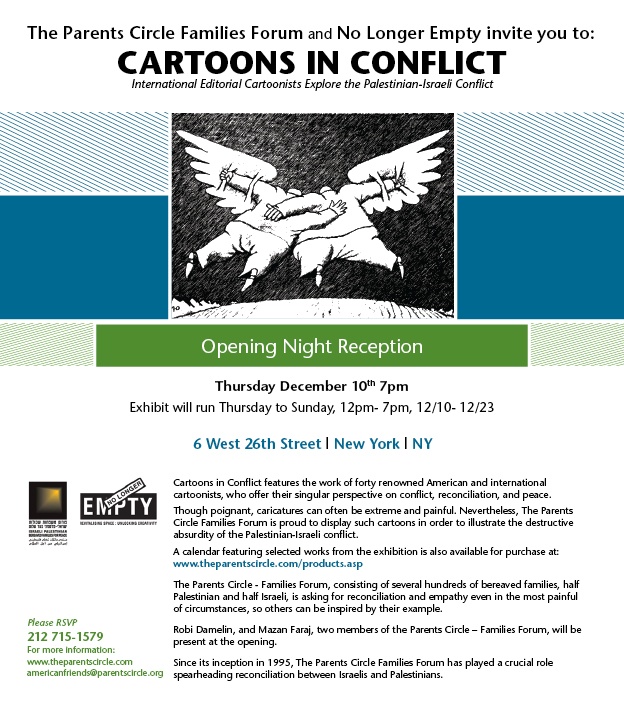 The Exhibition, Cartoons in Conflict that opened in NYC last month has traveled to London, and will open at St. Martin in the Fields. One of my drawings in the show appears on your left.
The Exhibition, Cartoons in Conflict that opened in NYC last month has traveled to London, and will open at St. Martin in the Fields. One of my drawings in the show appears on your left.
Tag: cartoons
New Yorker Cartoonists’ After-Holiday-Party

New Yorker Holiday after-party dinner at Cafe Un Deux Trois in Manhattan. Photos by Felipe Galindo (Feggo)
Left to right: Jack Ziegler, Liza Donnelly, Roz Chast, PC Vey, David Sipress, Paul Noth, Ward Sutton, Emily Flake, Carolita Johnson, Michael Crawford, Drew Dernavich, Joe Dator, Sam Gross, Bob Eckstein, John O’Brien, Bob Mankoff, Felipe Galindo, Michael Maslin
 A closer shot, left to right: John O’Brien, Bob Mankoff, Felipe Galindo, Michael Maslin, Jack Ziegler, Liza Donnelly, Roz Chast, PC Vey
A closer shot, left to right: John O’Brien, Bob Mankoff, Felipe Galindo, Michael Maslin, Jack Ziegler, Liza Donnelly, Roz Chast, PC Vey
 Carolita Johnson, Emily Flake, Andy Friedman
Carolita Johnson, Emily Flake, Andy Friedman
Cartoons in Conflict: Exhibition

Join me at the opening of this Exhibition of cartoons from all over the world about the conflict in the Middle East.
Cartoons on WomensEnews
The standard for reporting on women’s issues worldwide is upheld by the site womenseNews.org. They cover issues and concerns about women around the world, and no one compares to them. I feel fortunate to have joined their roster of amazing writers and correspondents as a contributor of cartoons. Here is my second cartoon for the site. I also feel honored to be a cartoon contributor next to one of my cartoon heros, Nicole Hollander.
On Humor and Feminism
The new blog, No Country for Young Women, transcribed my speech at Omega Institute and features it on their home page today. The creator of the blog is the wonderful filmaker Elena Rossini. You can find her work on The Illusionists website and her website.
Here is the link to the transcipt, and a few of my cartoons. I will post the video of the speech soon.
The New Yorker, David Remnick and Cartoons
An interview with David Remnick was posted on big think about humor and New Yorker cartoons. He is the senior editor of The New Yorker. Along with the cartoon editor, Bob Mankoff, the two men choose the cartoons that the magazine buys. What he says is not new, that it is hard to make a living at being a magazine cartoonist, and that many of us do other things as well. We have to. I teach, do illustration, write books.
The question is, what does he mean when he says he is looking for humor that is “authentically funny”? What is “humor at the highest level”? There is no universal standard, as there is no universal standard concerning fiction or short stories. One can approach a level of excellence, i.e. the writing is good, unique, it works, etc. The drawing has to work in concert with the words in a way that is hard to describe. “Good” drawing is a matter of whether it works with the idea, and whether or not it expresses a unique voice (along with the words). What has made The New Yorker the place many go to see good cartoons is that most of us who draw for the magazine try to create humor that comes from a unique point of view, a voice. Humor that is not recycled jokes, humor that works on several levels.
And, all that said, what is funny is extremely subjective. People are passionately opinionated about what they consider funny/not funny. This is what makes it hard to create and hard to find. The founder of The New Yorker, Harold Ross, worked extremely hard to find unique visual humor for the magazine. The artists he found and nurtured changed the landscape of visual humor in 1925.
(I write about all this in my books Funny Ladies, and Sex and Sensibility, btw)
